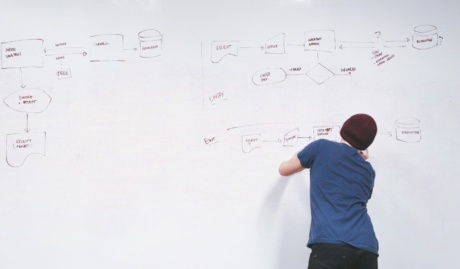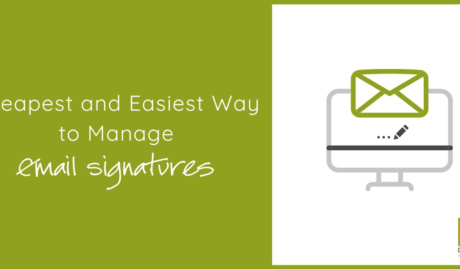When efficiency and impact are paramount, non-profit organisations are increasingly turning to advanced technologies to streamline their operations and amplify their reach. According to The Institute of Community Directors Australia “Our data shows that not-for-profits are moving quickly to embrace these new tools and the promise of increased productivity in a resource-constrained sector.”
Two game-changing technologies at the forefront of this transformation are Artificial Intelligence (AI) and Robotic Process Automation (RPA). These powerful tools have the potential to revolutionise how non-profits operate, allowing them to do more with less and focus more on their core missions.
Understanding AI and RPA
Before we dive into specific applications, let’s clarify what we mean by AI and RPA:
- Artificial Intelligence (AI) refers to computer systems that can perform tasks that typically require human intelligence. This includes learning from data, recognising patterns, and making decisions. Although AI has existed for many years it has only recently gained mainstream awareness when OpenAI launched ChatGPT to the public in 2022.
- Robotic Process Automation (RPA) involves using software “robots” to automate repetitive, rule-based tasks. These bots can interact with digital systems just like humans, but faster and with fewer errors.
While distinct, AI and RPA often work together extremely effectively. RPA handles routine tasks, while AI can be applied to more complex, decision-making processes.
AI Applications in Non-Profits
1. AI Chatbots for Instant Support
AI-powered chatbots can revolutionise how your non-profit interacts with stakeholders, providing immediate assistance around the clock:
- 24/7 Availability: Chatbots offer constant support for donors, volunteers, and beneficiaries, ensuring that help is always at hand
- FAQ Handling: By answering frequently asked questions, chatbots can significantly reduce staff workload, allowing team members to focus on more complex tasks.
- Guided Processes: Chatbots can walk users through donation processes or volunteer sign-ups, making these interactions smoother and more efficient.
- Instant Information: Provide quick access to information about programs and services, improving user experience and engagement
Implementing AI chatbots can lead to increased engagement, improved response times, and more efficient use of human resources. While custom-built chatbots are an option, in many cases you can also leverage existing AI platforms. For instance, Microsoft Copilot, integrated with Microsoft 365, can be used to create chatbots that interact with donors or volunteers through Teams or other Microsoft platforms.
2. Natural Language Processing for Grant Writing
Grant writing is a critical but often time-consuming task for non-profits. AI, specifically Natural Language Processing (NLP), can provide valuable assistance:
- Analysis of Successful Applications: NLP can analyse previously successful grant applications to identify common patterns, language, and structures that resonate with funders
- Content Suggestions: Based on the analysis, AI can suggest relevant statistics, case studies, or phrasings to include in new applications, potentially increasing their effectiveness
- Alignment Checking: AI can compare your proposal against a funder’s stated priorities and guidelines, ensuring better alignment and potentially increasing success rates.
- Writing Assistance: Some advanced NLP tools can even help with drafting sections of the proposal, which you can then refine and personalise (the old-fashioned way!).
By leveraging AI in grant writing, you can potentially increase your success rates and efficiency in securing crucial funding. Tools like Claude, an AI assistant developed by Anthropic, can be particularly useful in this context. Claude can help analyse past successful grants, suggest improvements to current drafts, and even assist in generating initial content for grant proposals.
3. Sentiment Analysis for Social Media
Understanding public perception is crucial. AI-powered sentiment analysis can provide valuable insights from social media:
- Monitoring Public Sentiment: AI can analyse social media posts to gauge public sentiment about your organisation or cause, helping you respond promptly to both positive and negative feedback.
- Identifying Trends: Sentiment analysis can spot emerging trends or issues in your field, allowing you to stay ahead of the curve and adjust your strategies accordingly.
- Campaign Impact Assessment: By analysing social media reactions, you can measure the impact of your awareness campaigns and adjust your approach in real-time
- Crisis Management: Early detection of negative sentiment spikes can alert you to potential crises, allowing for swift response and mitigation.
Sentiment analysis can help you stay tuned to your audience, adapt your messaging effectively, and manage online reputation proactively.
RPA Applications in Non-Profits
Robotic Process Automation (RPA) offers significant potential for non-profits to streamline operations, reduce errors, and free up staff time for more strategic work. Here’s a deeper look at how you can apply RPA in your organisation:
1. Automating Data Entry and Processing
RPA can significantly reduce the time spent on manual data entry tasks, improving accuracy and efficiency:
- Inputting donation information: Create bots to extract donation details from various sources (e.g., email, web forms, spreadsheets) and automatically input them into your central database. This not only saves time but also reduces the risk of data entry errors
- Processing volunteer applications: Develop RPA workflows to screen volunteer applications, check for completeness, and even perform initial eligibility checks based on predefined criteria. This can speed up your volunteer onboarding process
- Updating contact information: Implement bots that can scan incoming emails or forms for updated contact details and automatically update your CRM or database systems. This ensures your contact lists remain current with minimal manual intervention
2. Streamlining Financial Processes
Financial tasks that follow set rules are prime candidates for RPA, allowing for faster processing and improved accuracy:- Reconciling bank statements: Develop bots to match transactions in your accounting software with bank statements, flagging discrepancies for human review. This can significantly reduce the time spent on monthly reconciliations
- Processing expense reports: Implement RPA to validate expense reports against company policies, check for required documentation, and even initiate reimbursement processes for approved expenses
- Invoice processing: Automate the capturing of invoice data, matching with purchase orders, and routing for approval, significantly speeding up your accounts payable process
3. Simplifying Reporting and Compliance Tasks
RPA can assist with the often-time-consuming task of creating reports, ensuring accuracy and timeliness:
- Automatically gathering data for annual reports: Create bots that can extract relevant data from various internal systems (financial, program management, CRM) to compile information needed for annual reports. This not only saves time but also reduces the risk of data inconsistencies
- Generating compliance documents for regulatory bodies: Develop automated processes to gather required data, populate standardised forms, and generate compliance reports for various regulatory bodies. This helps ensure timely submission and reduces the risk of non-compliance
- Grant reporting: Automate the collection and compilation of data required for grant reporting, ensuring you meet reporting deadlines and maintain positive relationships with funders
Getting Started with AI and RPA
If you’re considering implementing AI or RPA in your non-profit, here are some steps to get started:
- Identify Pain Points: Look for repetitive, time-consuming tasks that could be automated, or areas where better predictive capabilities could improve decision-making
- Assess Data Quality: Both AI and RPA rely on good data. Ensure your data is accurate, consistent, and well-organised
- Start Small: Begin with a pilot project in one area of your operations. This allows you to learn and adjust before scaling up. For instance, you might start by using Microsoft Copilot to assist with drafting donor communications or Claude to help with initial grant proposal drafts
Conclusion
AI and RPA offer exciting possibilities for non-profits to increase their efficiency and impact. By automating routine tasks and leveraging data for better decision-making, these technologies allow organisations to focus more on their core missions and less on administrative burdens.
However, it’s important to approach these technologies thoughtfully. They are tools to augment and support your team, not replace them. The goal is to free up your staff to focus on the high-value, human-centric work that is at the heart of what non-profits do.
If you’re interested in exploring how AI and RPA could benefit your organisation, we’d be happy to discuss your specific needs and help you chart a path forward. Together, we can harness the power of technology to create meaningful change in the world.
















